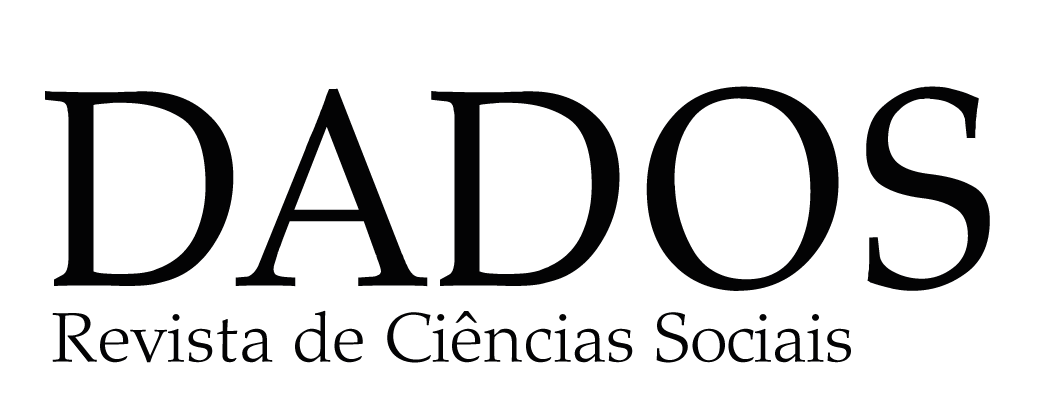Categorias
Critérios Operacionais
Capitalistas e fazendeiros
Critério original: Posição na ocupação de empregador; empregador não agrícola com 11 ou mais empregados; empregador agrícola com 11 ou mais empregados permanentes; empregador agrícola que emprega simultaneamente 6 ou mais empregados permanentes e 11 ou mais empregados temporários; empregador agrícola com 1.000 hectares ou mais de terra, independentemente do número de empregados. Critério aplicado à PNS: empregador com renda do trabalho situada nos dois décimos superiores da categoria de empregador [20% mais ricos].
Especialistas autônomos
Critério original: Posição na ocupação de conta própria ou empregador; especialista de acordo com o grupo ocupacional, com até 5 empregados ou sem empregados, com ou sem estabelecimento (loja, oficina, fábrica, escritório). Critério aplicado à PNS: Posição na ocupação de conta própria; especialista de acordo com o grupo ocupacional. Códigos COD (variável E01201): 2120,2521,2522,2523,2529,2511,2512,2513, 2514,2519,2111,2113,2112,2114,2141,2142,2152,2144,2145,2146,2143,2149,2131,2132,2211,2261,2250,2262,2221,2264,2265,2330,2320,2310,2351,2611,2619,2612,2632,2631,2633,2634,2635,2411,2421,2422,2423,2424,2412,2413,2431,2432,2642,2643,2654,2655,2652,3153,2133,2151,2153,2161,2162,2163,2164,2165,2166,2212,2230,2266
Gerentes
Posição na ocupação de empregado, gerente de acordo com o grupo ocupacional, abarcando os diretores de empresas, dirigentes da administração pública, administradores em organizações de interesse público (sem fins lucrativos, etc.) e gerentes de produção, operações e de áreas de apoio. Códigos COD (variável E01201): 110,411,511,1111,1112,1113,1114,1120,1211,1212,1213,1219,1221,1222,1223,1311, 1312,1321,1322,1323,1324,1330,1341,1342,1343,1344,1345,1346,1349,1411, 1412,1421,1420,1431,1439
Empregados especialistas
Posição na ocupação de empregado, especialista de acordo com o grupo ocupacional, incluindo as profissões credenciadas, as profissões de menor poder profissional e os professores do ensino médio e profissional com formação superior. Códigos COD (variável E01201): mesmos de especialista autônomo.
Pequenos empregadores
Critério original: posição na ocupação de empregador; empregador não agrícola que ocupa de 1 a 10 empregados; empregador agrícola com 3 a 10 empregados permanentes, desde que não empregue simultaneamente de 6 a 10 empregados permanentes e 11 ou mais empregados temporários. Critério aplicado à PNS: empregador com renda do trabalho situada nos oito décimos inferiores da categoria de empregador [80% mais pobres].
Autônomos com ativos
Critério original: posição na ocupação de conta própria com atividade de natureza não agrícola, cujo empreendimento ou titular possui uma ou mais das seguintes condições: estabelecimento (loja, oficina, fábrica, escritório, banca de jornal ou quiosque), veículo automotor (táxi, caminhão, van, etc.) usado para trabalhar ou ocupação qualificada no emprego principal. Códigos COD (variável E01201) para autônomo com ativos de qualificação: mesmos de empregado qualificado. Critério aplicado à PNS para ativos de capital: conta própria com atividade de natureza não agrícola com renda situada nos três décimos superiores da categoria [30% mais ricos].
Autônomos agrícolas
Critério original: posição na ocupação de conta própria com atividade em empreendimento do ramo que compreende a agricultura, silvicultura, pecuária, extração vegetal, pesca e piscicultura. Critério aplicado à PNS: conta-própria na atividade agrícola com renda do trabalho situada nos cinco décimos superiores da categoria [50% mais ricos].
Empregados qualificados
Posição na ocupação de empregado, empregado qualificado de acordo com o grupo ocupacional, abarcando os técnicos de nível médio nas diversas áreas, professores de nível médio ou formação superior no ensino infantil, fundamental e profissional, professores em educação física e educação especial. Códigos COD (variável E01201): 2263,2342,2341,3423,2352,2621,2641,2656,2653,2651,2636,3116,3134,3112,3113,3114, 3115,3135,3117,3118,3141,3142,3143,3255,3257,3221,3222,2267,3254,3251,3214,3240,3211,3212,3213,3313,3314,3341,3355,3312,3322,3323,3324,3331,3315,3321,3334,3311,3431,3521,5241,3422,3421,4211,5111,5113,7232,2222,2240,2269,2353,2354,2355,2433,2434,2622,2659,3111,3119,3131,3132,3133,3139,3151,3152,3154,3155,3230,3252,3259,3332,3333,3342,3343,3344,3351,3352,3353,3354,3359,3432,3433,3434,3511,3512,3513,3514,3522
Supervisores
Posição na ocupação de empregado, supervisor, chefe, mestre ou contramestre de acordo com o grupo ocupacional. Códigos COD (variável E01201): 3121,3122,3123,5222,5151
Trabalhadores típicos
Posição na ocupação de empregado, trabalhador em reparação e manutenção mecânica, ferramenteiro e operador de centro de usinagem; trabalhador de semirrotina na operação de instalações químicas, petroquímicas e de geração e distribuição de energia; trabalhador de semirrotina em serviços administrativos, comércio e vendas; trabalhador de rotina na operação de máquinas e montagem na indústria; trabalhador de rotina em serviços administrativos, comércio e vendas. Códigos COD (variável E01201): 210,412,512,2356,2359,4110,4120,4131,4311,4213,4321,4322,4411,4412,4212,4214,4224,4226,4223,4222,5244,4227,5112,5152,5120,5131,5132,5151,5153,5141,5142,5163,5663,5161,8157,5411,5414,5168,5223,5230,5242,5243,5211,5212,8341,8111,8112,8113,8114,8342,7111,7112,7114,7411,7412,7413,7124,7121,7125,7123,7122,7131,7222,7223,7224,8121,7221,7211,7113,7115,7119,7126,8122,7214,7212,7213,7215,8211,7127,7421,8212,7422,7311,7312,7313,7315,7314,8151,8152,8154,8155,8153,7532,7533,7536,8156,7534,7535,7321,7322,7318,7522,7521,7523,8172,7541,8343,8344,8321,8322,8331,8332,8311,8350,8312,8183,8131,8141,8142,8171,8143,7516,7515,7511,7514,7513,7512,8182,7233,7231,7234,3253,3256,3258,3259,3339,3411,3412,3413,3435,4132,4221,4225,4229,4312,4313,4323,4413,4414,4415,4416,4419,5164,5165,5169,5245,5246,5249,5311,5312,5321,5322,5329,5412,5413,5419,6111,6112,6114,6121,6122,6123,6129,6130,6210,7132,7133,7316,7317,7319,7323,7531,7542,7543,7544,7549,8132,8159,8160,8181,8189,8219
Trabalhadores elementares
Posição na ocupação de empregado, trabalhador com tarefas de trabalho bastante elementares na indústria e nos serviços, como ajudantes de obras, trabalhadores elementares na manutenção de vias públicas, faxineiros, lixeiros e carregadores de carga; trabalhadores manuais agrícolas, garimpeiros e salineiros, exclusive os trabalhadores na mecanização agrícola, florestal e drenagem. Códigos COD (variável E01201): 9112,9213,9211,9214,9212,9215,9216,6221,6224,6225,9313,9331,9332,9333,9312,9121,9122,9123,9129,9311,9321,9329,9334,9411,9412,9510,9520,9611,9612,9613,9621,9622,9623,9624,9629
Autônomos precários
Critério original: posição na ocupação de conta-própria e empreendimento ou titular sem a posse de nenhuma das seguintes condições: estabelecimento (loja, oficina, fábrica, escritório, banca de jornal ou quiosque), veículo automotor (táxi, caminhão, van etc.) usado para o trabalho ou ocupação qualificada no emprego principal; posição na ocupação de trabalhador na produção do próprio consumo; posição na ocupação de trabalhador na construção para o próprio uso. Critério aplicado à PNS: conta-própria em atividade não agrícola com renda do trabalho situada nos sete décimos inferiores da categoria [70% mais pobres].
Empregados domésticos
Posição na ocupação de trabalhador doméstico, com ou sem carteira de trabalho assinada.
Agrícolas precários
Critério original: conta-própria na atividade agrícola que controla terra pouca ou insuficiente (menos de 2 hectares), ou na condição de posseiro não tem o domínio legal sobre a sua posse, ou vê-se compelido a vender a totalidade (ou maior) parte da sua produção principal para o consumidor direto em mercados meramente locais. Critério aplicado à PNS: conta-própria na atividade agrícola com renda do trabalho situada nos cinco décimos inferiores da categoria [50% mais pobres].
Trabalhadores excedentes
Critério original: os trabalhadores excedentes são integrados pelos desempregados no sentido lato. Operacionalização na PNS: desempregado que procurou trabalho no período de referência de 30 dias. Variável E022=1

 Fonte: Elaboração própria a partir dos microdados da PNS 2013.
Fonte: Elaboração própria a partir dos microdados da PNS 2013.
 Fonte: Elaboração própria a partir dos microdados da PNS 2013.
Fonte: Elaboração própria a partir dos microdados da PNS 2013.
 Fonte: Elaboração própria a partir dos microdados da PNS 2013.
Fonte: Elaboração própria a partir dos microdados da PNS 2013.
 Fonte: Elaboração própria a partir dos microdados da PNS 2013.
Fonte: Elaboração própria a partir dos microdados da PNS 2013.
 Fonte: Elaboração própria a partir dos microdados da PNS 2013.
Fonte: Elaboração própria a partir dos microdados da PNS 2013.